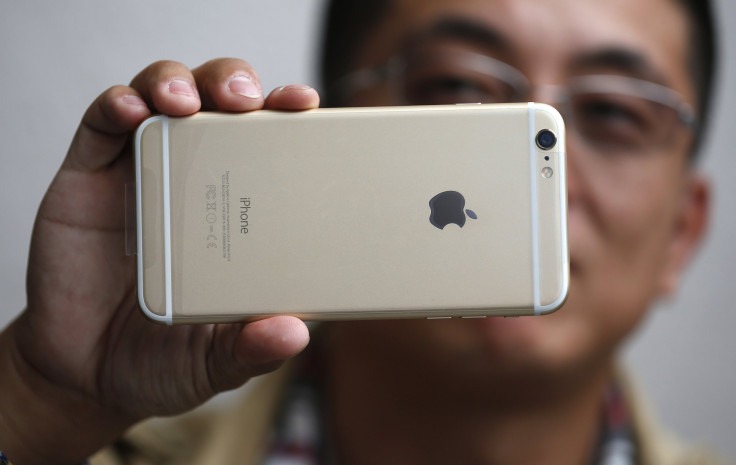Camera Phone Showdown: The Top 5 Smartphones For The Photo Obsessed

Smartphone manufacturers are going camera crazy. At first, it was all about rapidly increasing the megapixels, but more recently companies have jumped on the selfie phone bandwagon, such as HTC Corp.'s HTC Desire Eye smartphone, which features no less than two 13-megapixel cameras front and back.
The HTC Desire Eye is already being called the “ultimate selfie phone,” but contrary to popular belief that consumers are selfie-obsessed, the main camera is still important to most casual photographers. The technology on smartphone cameras now rivals that of high-end point and shooters, with many consumers favoring their mobile devices as their primary camera, partly for onboard photo editing and easy sharing.
But which smartphone cameras are the best on the market? Let’s take a look:
iPhone 6/iPhone 6 Plus
The iPhone 6 and iPhone 6 Plus have been available for less than a month but have already been lauded as the best smartphone camera on the market. Apple Inc. is known for improving its camera modules with software updates as opposed to constantly increasing the megapixels. The iPhone 6 and iPhone 6 Plus have an 8-megapixel iSight camera with autofocus and ƒ/2.2 aperture. Features including improved face detection and panorama up to 43 megapixels are upgrades from the iPhone 5s camera, which is also considered among the best smartphone cameras.
The iPhone 6 Plus also has optical image stabilization, setting it apart from the iPhone 6. The feature makes it easier to capture clear photos even when the handset is not steady. Both smartphone cameras include 1080p HD video recording with features such as slow-motion video and time-lapse. The iPhone 6 and iPhone 6 Plus both have 1.2-megapixel front cameras.
The iPhone 6 and iPhone 6 Plus cameras are noted for snapping clear images with even tone and good low-light performance. The camera falls short with a lack of detail in images, and photos may become washed out on flash.
Nokia Lumia 1020
The Nokia Lumia 1020 includes a 41-megapixel Pure View camera autofocus lens, which is more than is seen on most point and shoots or even professional DSLR cameras. While the Lumia 1020 camera may not be on the DSLR level, it is formidable among mobile devices. The shooter features high-resolution 3x zoom and optical image stabilization in addition to several light-sensitivity options. The device includes 1080p HD video recording and a 1.2-megapixel front camera.
The Nokia Lumia is noted for capturing detail and natural tones. The device’s camera performs well in low light, with optical image stabilization and maintains color well with flash. The camera falls short in that Windows phones such as the Nokia Lumia 1020 are simply not quite popular on the market.
LG G3
The LG G3 includes a 13-megapixel autofocus lens, which may seem like just one of many 13-megapixel cameras on the market currently. However, the device is a quiet underdog. Its camera includes optical image stabilization and a soft-light feature for selfie taking. Its gesture shutter feature simplifies capturing photos by prompting the shutter with a motion instead of pressing a button. Its magic focus feature allows the lens to create focal points in a shot. The device includes 4K video recording, 1440p video display and a 2.1-megapixel front camera.
The LG G3 is noted for capturing detail and for high performance in low light (indoor and night shots). The device's camera also does well with panorama images. The camera falls short with color accuracy.
Samsung Galaxy S5
The Samsung Galaxy S5 also has many accolades as a superior mobile camera. The device features a 16-megapixel phase-detection autofocus lens. It features HDR (rich tone) and selective focus in addition to Samsung’s extensive collection of camera app features. The device includes 4K video recording, 1440p video display and a 2-megapixel front camera.
The Samsung Galaxy S5 is noted for its color accuracy and detail. Its autofocus feature is also particularly quick. The camera falls short with low-light photos; indoor and night shots tend to be lackluster.
Sony Xperia Z2/Sony Xperia Z3
The Sony Xperia X2 is an older device with its successor the Xperia Z3 now hitting stores, but its camera is still notable, and should be identical on the Z3. The Xperia X2 features a 20.7-megapixel lens. It features background defocus, which blurs a background while behind a prominent focal point. Its creative effects feature allows users to apply photo effects before a photo is captured. The device includes 4K video recording, 1440p video display and a 2.2-megapixel front camera.
The Sony Xperia is noted for its color accuracy and detail. Good lighting makes for brilliant shots, but the camera falls short with low-light photos. There is also a lengthy focus time before the shutter, which can equate to missed shots.
Bonus: Samsung Galaxy K Zoom
The Samsung Galaxy K Zoom is a mobile camera, but not in the way that other smartphones are mobile cameras. This device is a phone with a full point-and-shoot camera superimposed on its back, putting it in a category of its own. The Samsung Galaxy K Zoom features a 20.7-megapixel lens. It features high-resolution 10x zoom, optical image stabilization and a Pro suggest feature, which detects the best camera settings for a photo based on light, color and more detailed aspects such as the gender of the subject. The device includes 1080p HD video recording and a 2-megapixel front camera.
The Samsung Galaxy K Zoom is noted for its detail and its performance in low light. The camera falls short in that the zoom lens on the back can make the phone feel bulky. The Galaxy K Zoom also has limited availability, which does not include the U.S.
© Copyright IBTimes 2024. All rights reserved.





















